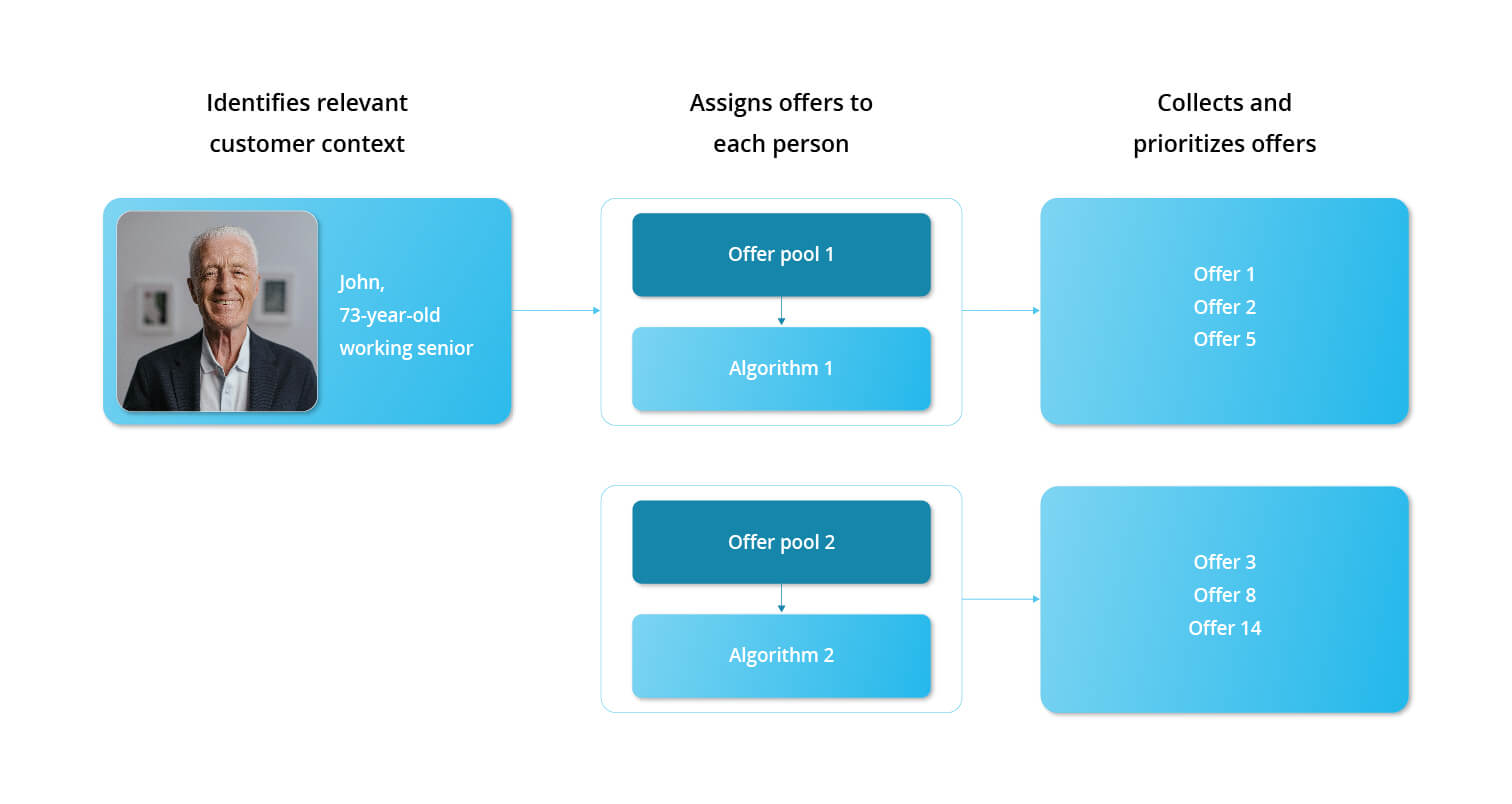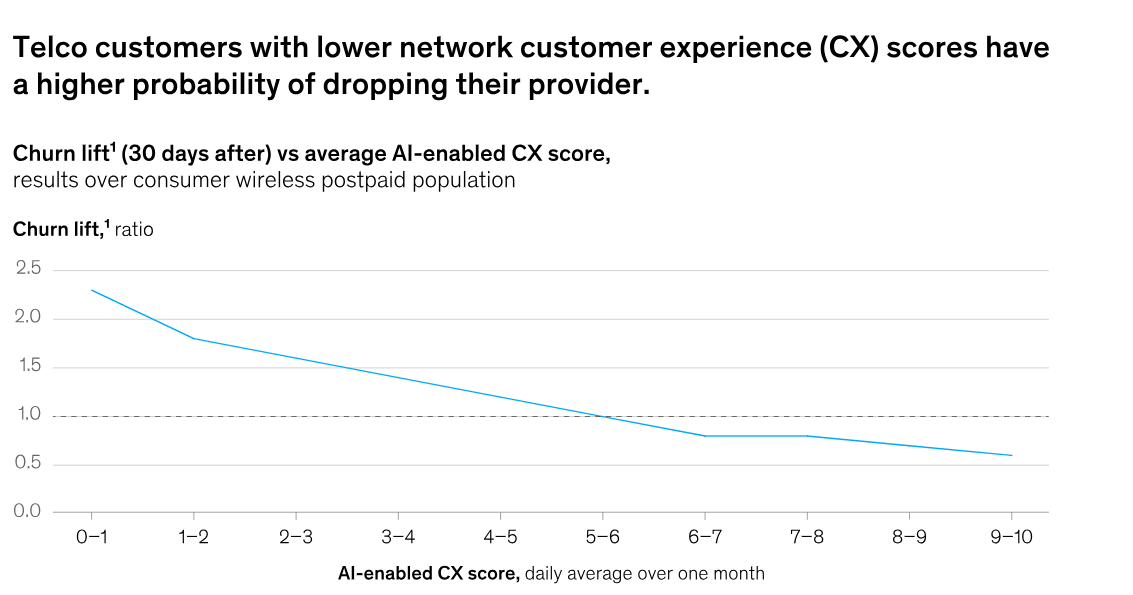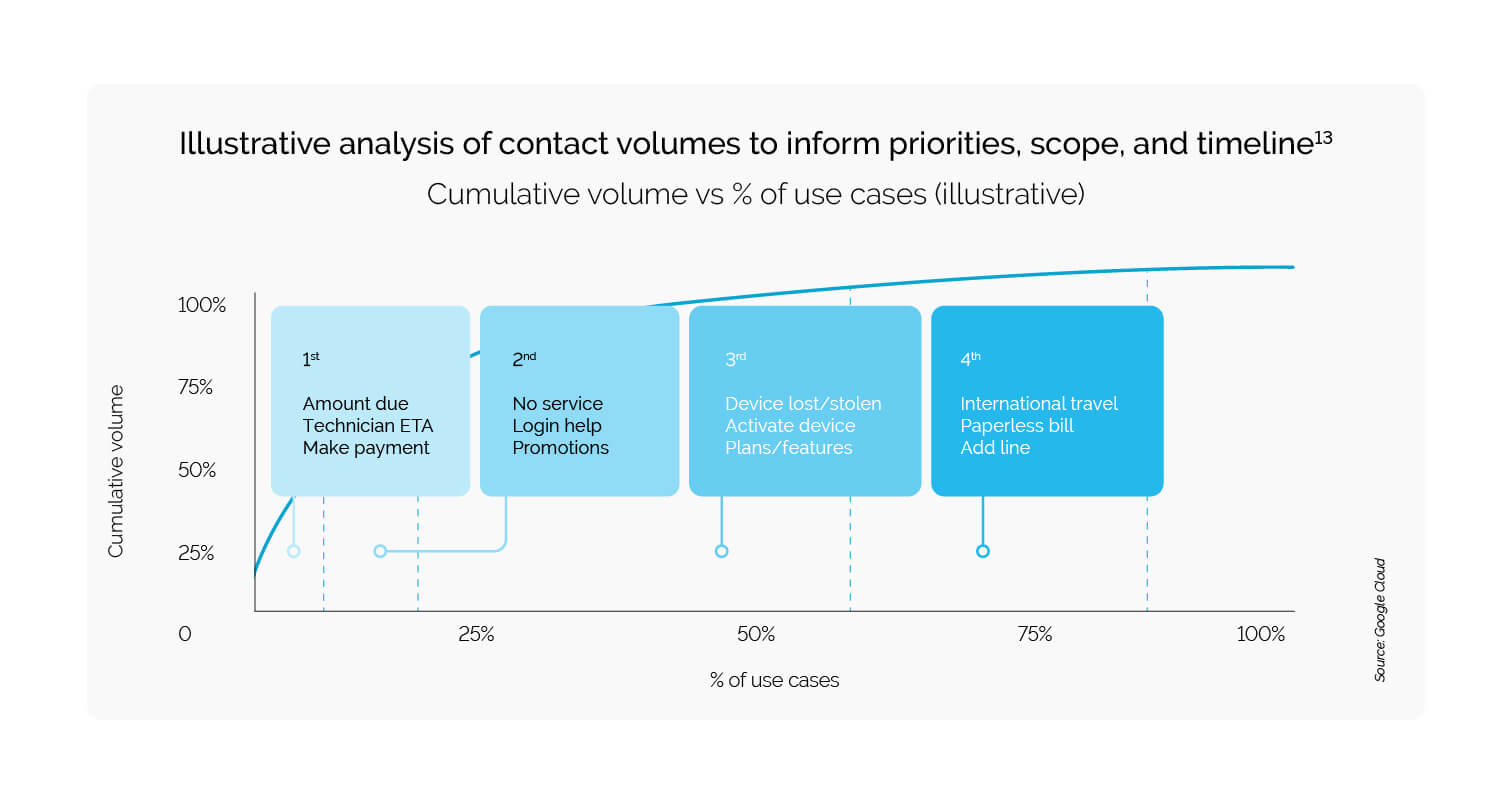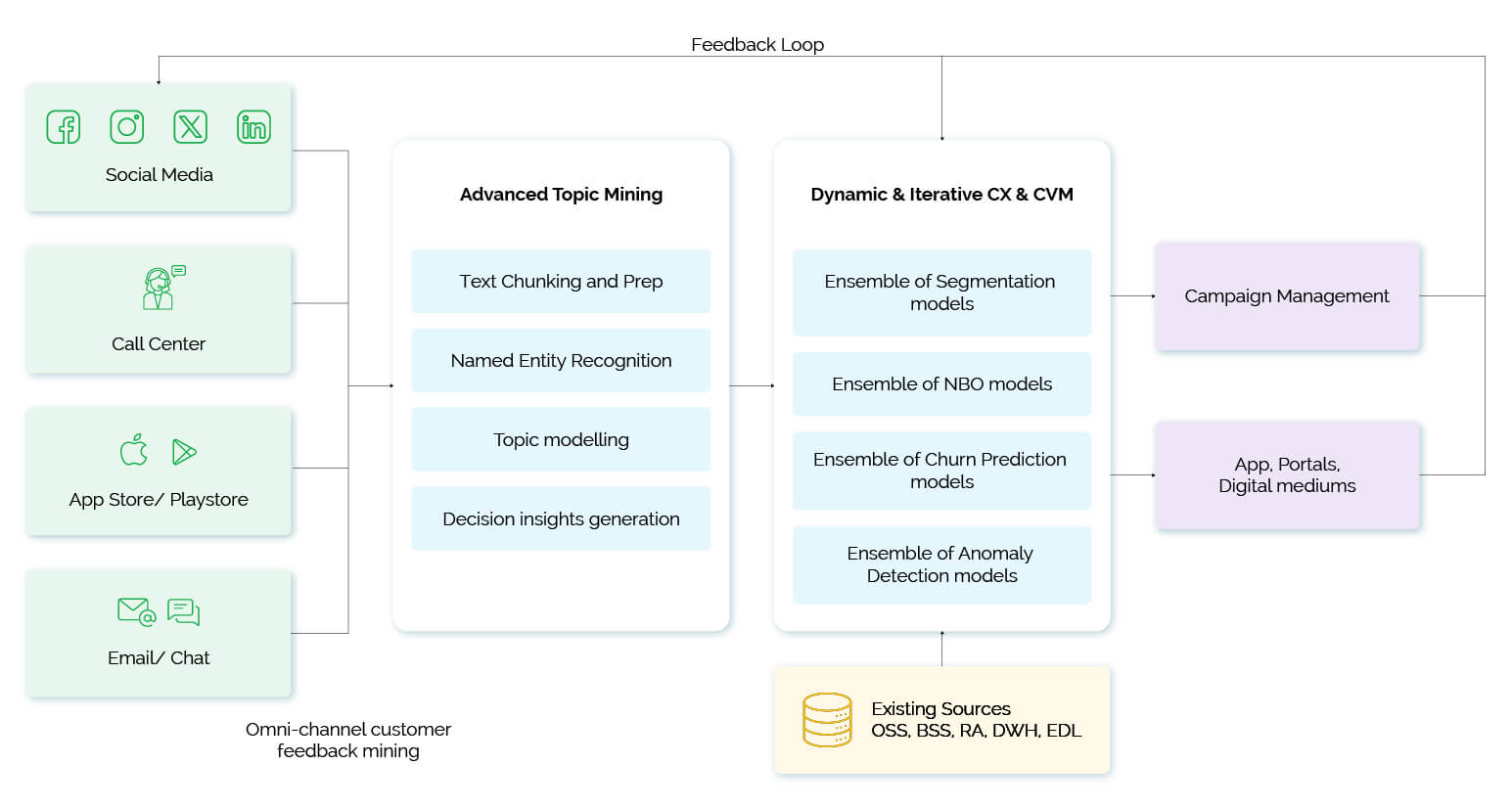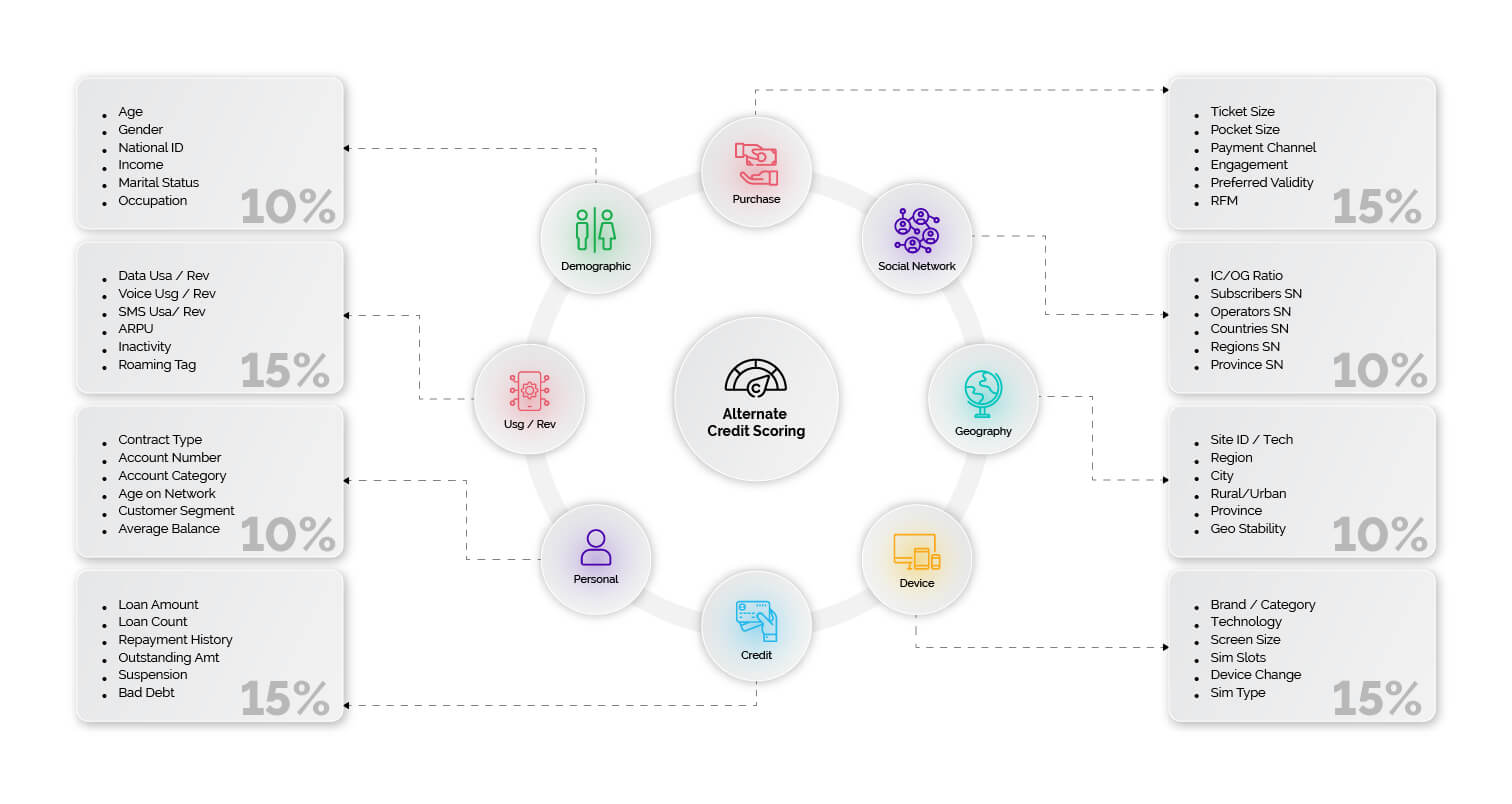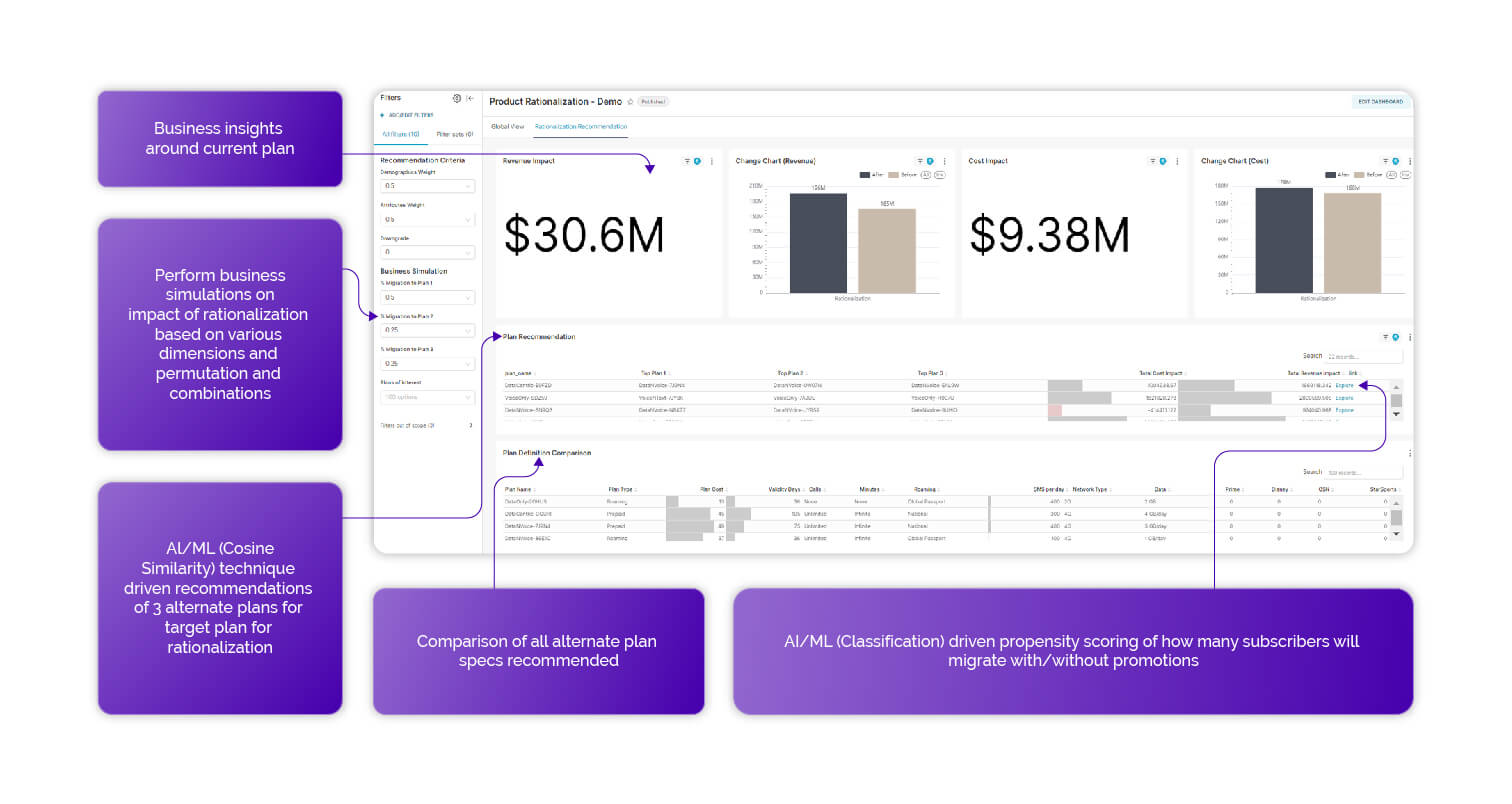AI Trends in Telecom 2025: Solving Critical Industry Challenges
Telecom is no longer about just connecting people; it’s about empowering businesses and societies with intelligent solutions that anticipate needs, solve problems, and create value. By 2027, global telecom data traffic is projected to surpass 300 exabytes per month, which is about 50mn HD movies on Netflix, a staggering figure that underscores the urgency for operators to turn this deluge into actionable insights. With customer expectations evolving faster than ever, 76% of consumers now expect personalized experiences from their service providers, but less than 37% of telecom operators can generate actionable insights from their analytics.
The answer lies in Artificial Intelligence (AI), but not in the way you’ve heard before. This is not about automation for cost-cutting or predictive models that work behind the scenes. This is about a seismic shift—a redefinition of how telecom operators function and innovate, moving beyond operational efficiency to a future where intelligence is embedded into every decision, interaction, and system.
Navigating Telecom’s Core Challenges
Personalization has become the cornerstone of customer loyalty in the telecom industry. Research shows that 80% of customers are willing to share data for a more personalized experience, expecting services to align with their unique preferences and needs. This demand marks a seismic shift in how customers perceive value, moving beyond speed and reliability to expect tailored interactions across every touchpoint.
However, many telecom operators struggle to meet these expectations. Legacy systems and traditional segmentation models are ill-equipped to handle the dynamic needs of modern consumers. This gap leads to increased churn, as dissatisfied customers move to competitors that offer a more personalized approach. Beyond this, the inability to tailor offers and services results in missed upselling and cross-selling opportunities, directly impacting Average Revenue Per User (ARPU) and profitability.
For operators, this isn’t just a matter of keeping up—it’s about redefining the customer relationship. Personalization is no longer a differentiator; it’s a basic expectation. To address this challenge, advanced AI and machine learning solutions are becoming essential. By leveraging real-time customer data, operators can anticipate individual needs, craft targeted offers, and foster deeper engagement. This proactive approach not only reduces churn but also transforms fleeting customer interactions into long-term partnerships that drive sustained growth.
Use Cases of AI in Telecom
Enhancing Customer Experience – The Market of One!
In today’s telecom landscape, Customer Experience (CX) is the defining battleground for competitive differentiation. A customer segment of the future is no more going to be a group of customers, but just one customer! Research by Watermark Consulting shows that CX leaders outperform the S&P 500 by 54%, while CX laggards trail by as much as 240%. Despite significant investments in marketing network coverage, speed, and pricing, no leading Communication Service Provider (CSP) has achieved “beloved” status as measured by Net Promoter Score (NPS).
This gap presents a unique opportunity for operators to carve out a leadership position by focusing on transformative CX strategies. Customers are clear about what they want: 82% of customers expect brands to understand their needs and preferences, while 71% express frustration when their experience feels impersonal. Historically, aligning with these expectations has posed significant challenges for telecom operators. However, with AI and ML technologies, cost-effective personalization and self-service capabilities are now within reach, making transformative CX achievable at scale.
- Real-Time Personalization: AI enables operators to analyze customer preferences and behaviors dynamically, delivering tailored recommendations such as data plans, add-ons, and promotions. Personalized interactions foster loyalty, increase engagement, and elevate the brand experience.
- Predictive Churn Analytics: With customer churn averaging 08-13% annually, predicting and addressing churn is critical. AI-driven models identify early warning signs of churn, such as reduced usage or billing complaints, allowing CSPs to implement targeted retention campaigns.
Source: Google Cloud
The churn lift ratio indicates the likelihood of customer churn relative to the average, while the AI-enabled CX score measures the quality of customer interactions as determined by AI insights. The trend shows that as the AI-enabled CX score improves (from 1 to 10), the churn lift ratio significantly decreases. This demonstrates that higher CX scores, driven by AI interventions, correlate with reduced customer churn, emphasizing the importance of AI in enhancing customer satisfaction and loyalty.
- AI-Powered Customer Support: Self-service capabilities, such as virtual assistants and conversational AI, allow customers to resolve routine queries efficiently. From billing inquiries to troubleshooting connectivity, AI-driven systems reduce wait times, provide accurate resolutions, and free human agents to handle complex cases. This creates a seamless support experience, empowering customers while optimizing operational costs.
Source: Google Cloud
The chart shows the cumulative volume of customer interactions (vertical axis) against the percentage of use cases (horizontal axis). High-volume issues such as “amount due” and “make payment” dominate the first quartile (25%), while less frequent concerns like “device lost/stolen” and “add line” appear in later quartiles. This prioritization helps organizations focus on high-impact use cases for automation and process improvements, driving efficiency and better customer experience.
According to McKinsey, AI could create between $80 billion and $174 billion in value for global CSPs, with 90% of this value driven by CX-related improvements. AI-powered personalization, predictive analytics, and self-service tools are no longer futuristic concepts—they are the present-day solutions shaping the future of telecom. By embracing these capabilities, operators can redefine customer relationships and position themselves as CX leaders in a competitive market.
Driving Revenue Growth with AI
Traditional telecom revenue streams are nearing saturation, making it critical for operators to explore new avenues for growth. AI has emerged as a game-changing technology, offering a total economic impact of $450–680 billion globally. Of this, $250–400 billion comes from established AI applications such as predictive analytics, advanced machine learning, and process automation, which have already proven their ability to optimize operations and increase profitability.
Generative AI, however, is driving the next wave of innovation, contributing an additional $60–100 billion—about 15–40% of new economic value. This includes pioneering applications like hyper-personalized customer engagement, conversational AI, and intelligent content generation. Beyond these direct applications, generative AI could boost workforce productivity across telecom use cases, unlocking another $140–180 billion in value by streamlining workflows and enabling high-impact decision-making.
- Harnessing Topic Mining to Unlock Insights
The telecom industry generates enormous volumes of unstructured data from call centers, surveys, app stores and social media, yet 85% of this data goes unused (Gartner). Topic mining, powered by AI, transforms this untapped resource into actionable insights by identifying recurring themes, sentiment trends, and customer pain points.
For example, sentiment analysis can highlight dissatisfaction with billing processes or rising interest in paperless billing. Companies leveraging topic mining report up to 25% improvement in Net Promoter Score (NPS) and a 15-20% reduction in churn. Additionally, this approach allows telecom operators to detect emerging customer needs, enabling them to innovate faster and refine services to meet expectations.
By addressing key insights from topic mining, operators can enhance customer satisfaction, reduce call center volumes by up to 30%, and drive new revenue streams. As AI adoption grows, topic mining will become a cornerstone of customer experience strategies, helping telecom operators stay competitive and proactive in a dynamic market.
- Expanding Market Reach with Alternate Credit Scoring
Traditional credit scoring excludes billions of underbanked individuals, particularly in emerging markets. AI offers a solution by analyzing alternative data such as mobile usage patterns, payment histories, and service subscriptions to assess creditworthiness. This capability allows operators to tap into underserved markets, expanding their customer base and driving new revenue streams.
- Product Portfolio Rationalization for Profitability
Telecom operators often struggle with bloated product portfolios that confuse customers and inflate costs. AI evaluates customer preferences, sales performance, and market demand to streamline offerings. By eliminating redundant or underperforming products, operators can reduce marketing and operational expenses while focusing on high-margin offerings.
- Increasing Customer Lifetime Value with Predictive Analytics
AI helps identify high-value customers and optimize their journey by delivering personalized offers, loyalty programs, and targeted cross-sell opportunities.
This ensures that operators maximize revenue potential over the entire lifecycle of each customer, turning one-time buyers into long-term advocates.
Transformative Advantages of AI for Telecom Operators
- Enhanced Personalization: AI enables tailored customer experiences, boosting engagement and loyalty.
- Proactive Issue Resolution: Predictive analytics identify and resolve issues before they affect customers.
- Revenue Growth: AI unlocks new markets through alternate credit scoring and data monetization.
- Cost Reduction: Automation and optimization lower operational costs by up to 30%.
- Improved Decision-Making: AI provides actionable insights from data, enabling faster and smarter decisions.
- Scalable Operations: AI-driven tools streamline processes, ensuring seamless scalability as demand grows.
Conclusion
Telecom operators are rapidly embracing AI to address critical challenges, enhance services, and drive innovation. AI is no longer a futuristic concept—it is a tangible, transformative force reshaping how operators engage with customers, optimize networks, and unlock new revenue streams. Recent trends show significant investments in AI-driven solutions, reflecting a growing recognition of its potential to deliver measurable business outcomes.
AI adoption is already driving cost reductions, improving customer satisfaction, and enabling operators to scale efficiently. From predictive analytics and generative AI for customer engagement to intelligent network management, telecom operators are leveraging AI to reimagine traditional processes and stay ahead in a competitive landscape.
This blog demonstrates the opportunities AI offers to transform the telecom sector. Now is the time for operators to act decisively, embracing AI to position themselves as leaders in the next wave of industry evolution. By integrating AI-driven solutions, operators can not only meet the demands of today’s dynamic market but also shape the future of telecommunications
Embark on Your AI-Powered Journey with Subex!

